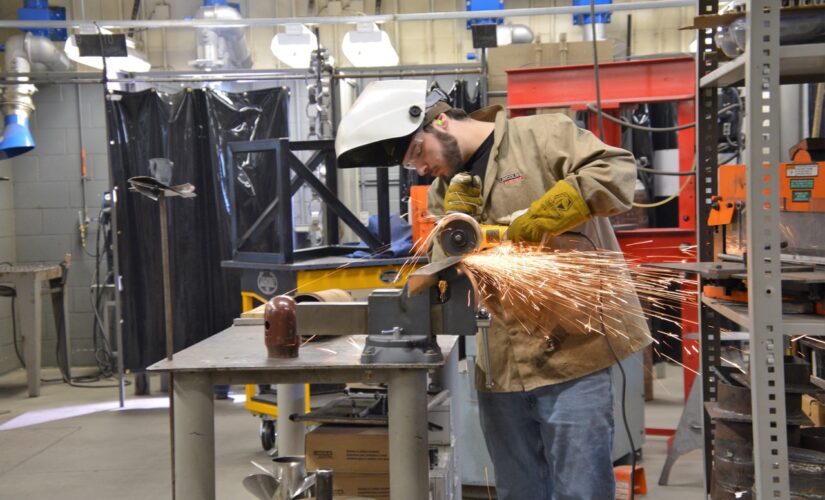Welding
(48 .0508)
Program Description
This is a program that prepares individuals to apply technical knowledge and skills in gas, arc, shielded and nonshielded metal arc, brazing, flame cutting and plastic welding. Hand, semiautomatic and automatic welding processes are also included in the instruction. Students learn safety practices and types and uses of electrodes and welding rods; properties of metals; blueprint reading; electrical principles; welding symbols and mechanical drawing; use of equipment for testing welds by ultrasonic methods and destruction and hardness testing; use of manuals and specification charts; use of portable grinders and chemical baths for surface cleaning; positioning and clamping; and welding standards established by the American Welding Society, American Society of Mechanical Engineers and American Bureau of Ships. Opportunities in the welding field are endless and can be extremely rewarding. Due to the fact that welding is widely used in construction, manufacturing and many other industries, employers have a constant need for skilled welders. Welding is an important part of our nation’s growth and stability. In fact, for those who are involved in the welding industry, there is a strong conviction that a large part of the U.S. economy is dependent on welding, and that continued advances in the field help to drive this nation’s productivity and strengthen its financial stability. Welding is the most common way of permanently joining metal parts. Because of its strength, welding is used in all types of manufacturing industries, such as shipbuilding, automobile manufacturing and repair, and aerospace applications. Welding also is used to join beams when constructing buildings, bridges and other structures, and to join pipes in pipelines, power plants and refineries. Other applications include the manufacturing of small electronic devices, medical components and nanotechnology, which is the latest development to revolutionize the world of manufacturing, at the molecular level. Aspiring welders also learn to interpret plans, drawings, codes and specifications, lines, symbols and abbreviations on working drawings or blueprints. The analysis of specifications and contract drawings for projects is an important skill that welders should master. Welders also need to be able to produce accurate labor and material estimations for a manufacturing project. Welders who are proficient in a variety of welding methods using a wide array of tools and procedures could find themselves working on oil platforms in the Gulf of Mexico, on top of the tallest buildings in New York City, on the U.S. Navy’s newest aircraft carrier or operating a private welding business. Welding employment opportunities are diverse and skilled welders can choose from a variety of openings both nationally and internationally. Welding technology offers immediate job prospects with potential for growth and promotion. Welding career pathways also include college where students can consider a field of study in welding engineering or metallurgy. Brazing and soldering are closely related fields in which welders may achieve proficiency. Individuals in these occupations set up, operate, and monitor welding, soldering, or brazing machines that weld, braze, solder, or heat treat metal products, components, or assemblies. Those individuals completing the welding program may be employed as fabricators, cutters, mig welders, sub arc operators, aluminum welders, spot welders, fitter welders, maintenance welders, and welders.
